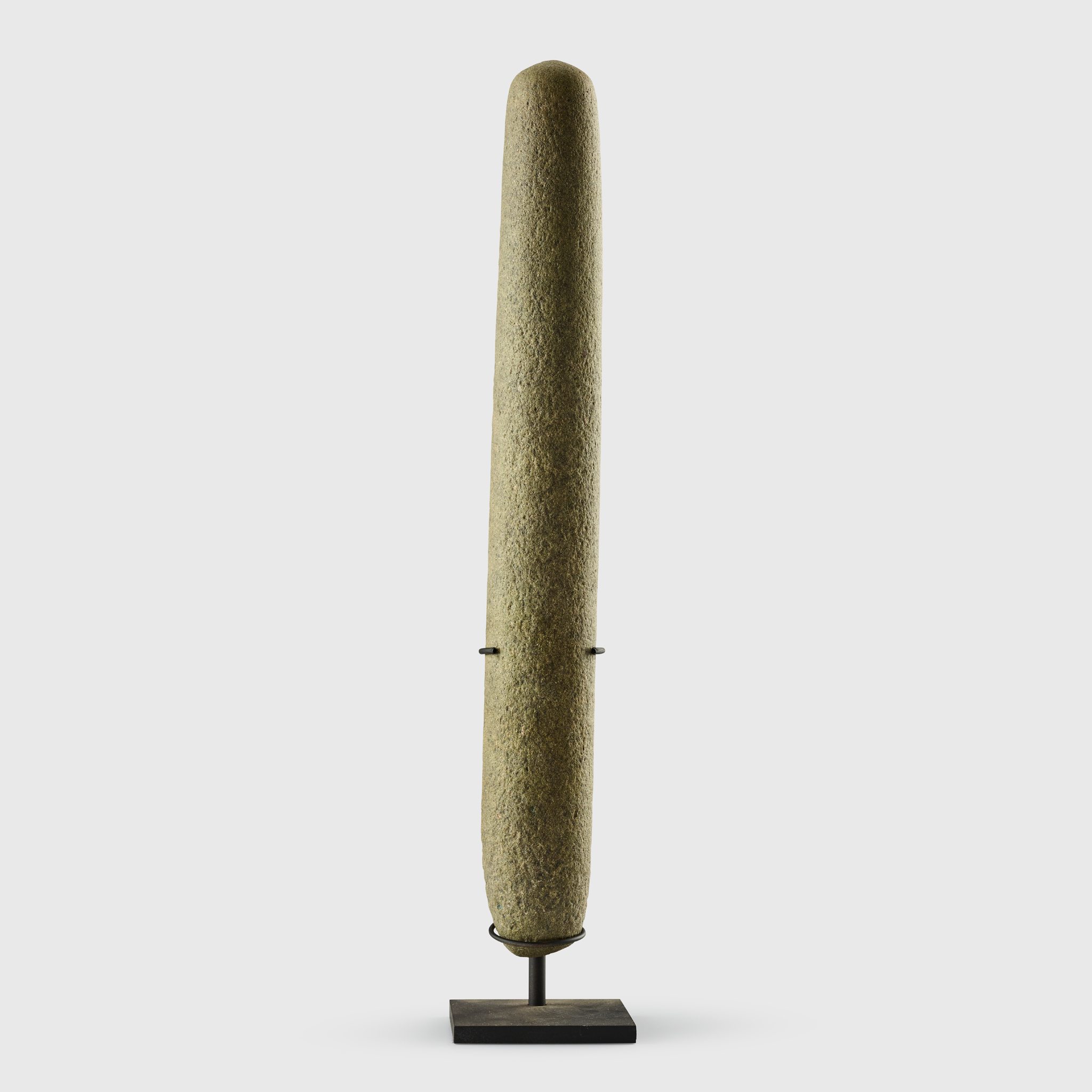AFRICAN NEOLITHIC GREEN FELSITE POUNDER
TENERIAN CULTURE, CENTRAL SAHARA, C. 4TH – 2ND MILLENNIUM B.C.
Estimate: £500 - £800
Auction: 13 March 2025 from 13:00 GMT
Description
of narrow cylindrical shape with slightly pointed ends, on a bespoke black metal stand
Dimensions
51cm tall
Provenance
Private collection, Belgium, formed late 1960s – present
Footnote
The Tenerians, a people named for the Ténéré Desert, a stretch of the Sahara in Niger known to Tuareg nomads as a "desert within a desert", were in the region from 5200 B.C. E. to around 2500 B.C.E. This is one of the driest deserts in the world today, but archaelogical evidence confirms it hosted at least two flourishing lakeside populations during the Stone Age. The first culture appearing in the area 10 000 years ago were the Kiffians, hunter-fisher-gatherers whose large stature of up to 6 feet proves that food was abundant. The Sahara dried up around 7200 B.C., which caused the Kiffians to disappear. The arid period lasted roughly a millenia, after which the water returned, and with it a new population, this time the Tenerians. Based on skeletal evidence, they curiously seemed to have more in common with people living in the Mediterranean than neighbouring settlers in the Sahara. Around 2500 B.C., the onset widespread desertification of the Sahara ended the settlement in Gobero.

